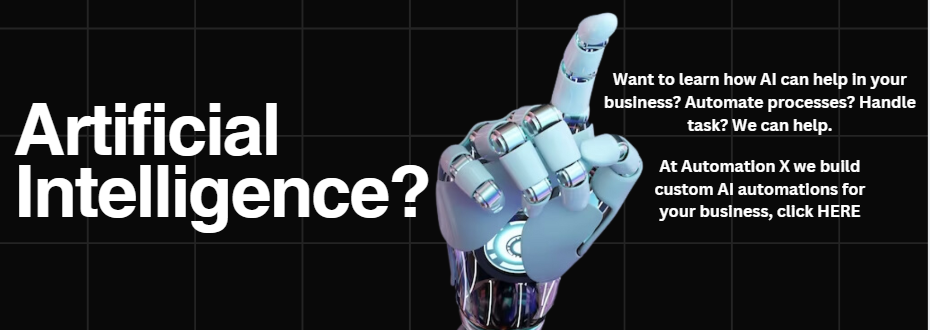Businesses and governments are increasingly leveraging AI automation to improve service delivery and efficiency, particularly in response to economic challenges brought on by the pandemic.
In the current technological landscape, businesses are increasingly integrating artificial intelligence (AI) automation to enhance operations and improve service delivery across various sectors. This trend is evident in sectors such as financial services, healthcare, logistics, and government services, where AI is being employed to streamline processes, improve efficiency, and ultimately drive growth.
A notable example of this integration is the deployment of customised software solutions in response to economic challenges. In the wake of the COVID-19 pandemic, many governments have launched programmes to provide financial assistance to residents struggling with economic hardships. One such implementation is the Financial Aid Management System (FAMS), developed for the Arizona Department of Housing (ADOH) as part of the U.S. Treasury’s Homeowner Assistance Fund (HAF) programme. This initiative aims to offer financial relief to homeowners at risk of foreclosure, spurred by the economic downturn caused by the pandemic.
Harsh Vaidya, a Product Manager with extensive experience in Software as a Service (SaaS) cloud solutions and Agile methodologies, has been integral to the successful implementation of FAMS. His role involved leading the development teams responsible for delivering a robust platform tailored to the specific requirements of Arizona, which included a sophisticated case management system capable of efficiently processing diverse applications for aid ranging from mortgage assistance to utility payments.
The system is distinguished by its complex rule engine that ensures compliance with the guidelines established by the U.S. Treasury while catering to the unique demands of the state. This capability allows for a nuanced assessment of various aid applications, enabling the system to provide the appropriate level of assistance based on individual circumstances. Furthermore, the inclusion of a dynamic reporting dashboard allows administrators at ADOH to monitor application statuses, track fund dispersals, and fulfil compliance obligations, showcasing the practical implementation of automation in government operations.
A significant challenge presented during the development of FAMS was ensuring a user-friendly experience amid the complexity of the application and adjudication processes. To confront this, Harsh facilitated the integration of third-party services to enhance operational efficiency. Solutions such as ID.me were used to simplify identity verification procedures for applicants, while SmartyStreets enabled real-time address validation, effectively minimising errors in aid distribution. These enhancements not only streamline operations but also allow ADOH staff to concentrate on higher-priority tasks, fostering an environment of increased productivity and efficiency.
The tangible benefits of the FAMS platform have been considerable, having processed thousands of applications that provided crucial assistance to residents during a period of significant financial uncertainty. This successful deployment illustrates not only the technical advancements inherent in AI automation but also emphasizes the platform’s role in addressing pressing social needs.
Additionally, Harsh Vaidya’s contributions do not stop with the current implementation. His research into AI-driven predictive modelling aims to further enhance the functionality of the FAMS platform. By exploring machine-learning algorithms that predict application trends, the platform can not only adjust resource allocation dynamically but also ensure an equitable distribution of financial aid. This forward-thinking approach is crucial in the context of increasing demand for streamlined assistance.
Harsh also envisions future developments that involve integrating emerging technologies such as blockchain and the Internet of Things (IoT) into these systems, potentially enhancing security, transparency, and efficiency in the management of financial aid. These innovations may afford public agencies the ability to track aid disbursements with unprecedented accuracy and security, further entrenching the role of technology in facilitating effective governance and support for communities.
The broad implementation of AI automation in such significant initiatives highlights the potential of technology to drive growth and enhance service delivery within organisations. As evidence mounts regarding the effective use of AI in various sectors, businesses continue to explore these technologies as avenues for innovation, operational improvement, and responsive service to societal needs.
Source: Noah Wire Services
- https://futurecio.tech/2024-the-year-of-ai-integration-and-usage-report-finds/ – Corroborates the increasing integration of AI and automation in business operations to enhance productivity and efficiency.
- https://connect.comptia.org/blog/artificial-intelligence-statistics-facts – Provides statistics on the widespread adoption of AI across various business sectors, including financial services, healthcare, and logistics.
- https://www150.statcan.gc.ca/n1/pub/11-621-m/11-621-m2024013-eng.htm – Details the adoption of AI in different industries and the plans of businesses to implement AI in the near future, highlighting sectors like information and cultural industries.
- https://www.venasolutions.com/blog/ai-statistics – Discusses the adoption of AI tools in various industries, including manufacturing and retail, and the benefits such as reduced manual tasks and improved customer experiences.
- https://taskdrive.com/sales/ai-statistics/ – Provides insights into AI adoption statistics, including the use of AI in financial services, customer service, and the projected growth of the AI market.
- https://connect.comptia.org/blog/artificial-intelligence-statistics-facts – Highlights the challenges and obstacles to AI adoption, such as the lack of skilled individuals and unclear ROI metrics, which are relevant to the development of complex systems like FAMS.
- https://www.venasolutions.com/blog/ai-statistics – Mentions the use of AI in streamlining operations and enhancing customer value, which aligns with the user-friendly experience and operational efficiency achieved in the FAMS platform.
- https://futurecio.tech/2024-the-year-of-ai-integration-and-usage-report-finds/ – Supports the idea of AI integration leading to increased productivity and efficiency, as seen in the successful implementation of FAMS.
- https://taskdrive.com/sales/ai-statistics/ – Discusses the potential of AI in predictive modelling and resource allocation, which is in line with Harsh Vaidya’s research into AI-driven predictive modelling for FAMS.
- https://www150.statcan.gc.ca/n1/pub/11-621-m/11-621-m2024013-eng.htm – Highlights the importance of training staff in AI use, which is consistent with the need for staff training in the implementation and future development of FAMS.
- https://www.venasolutions.com/blog/ai-statistics – Mentions the potential integration of emerging technologies like blockchain and IoT, which aligns with Harsh Vaidya’s vision for future developments in the FAMS platform.
















